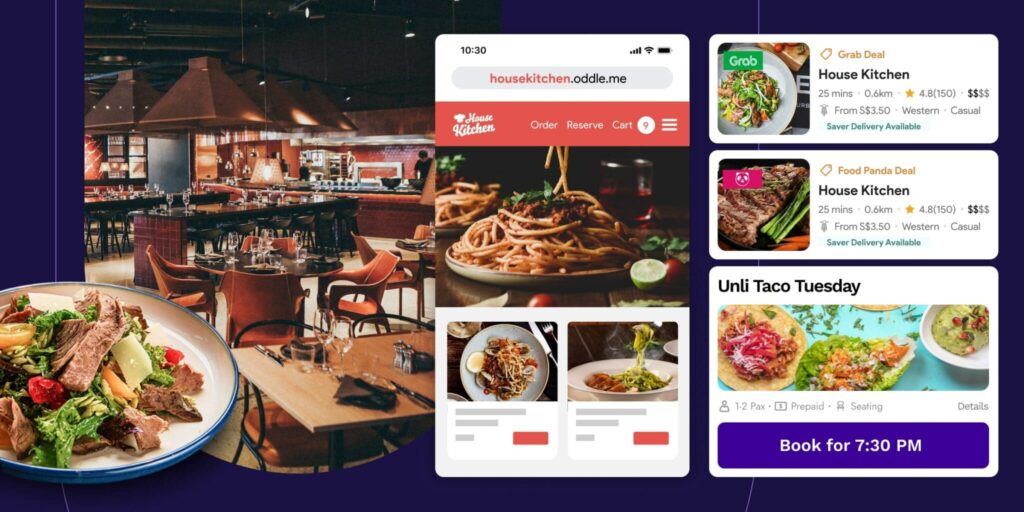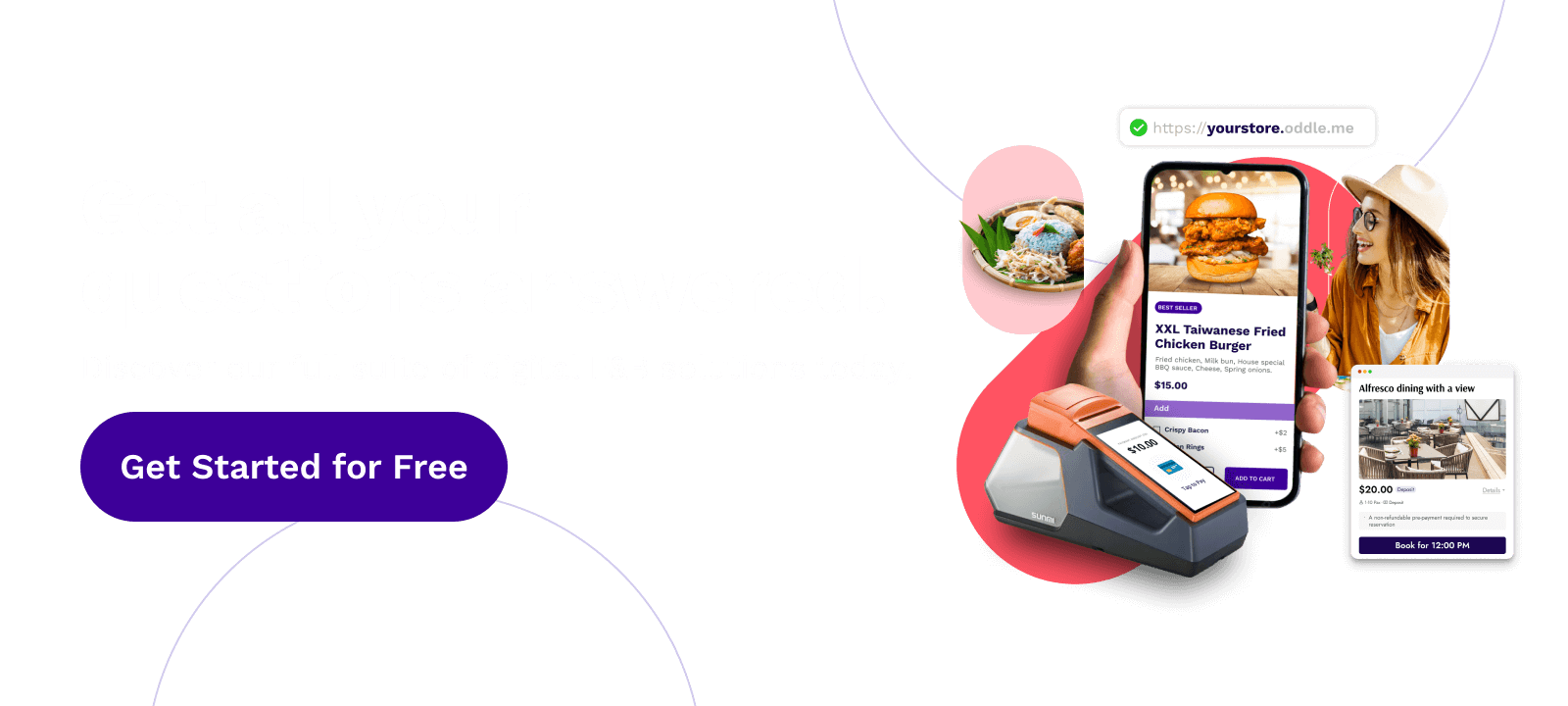Increase Restaurant Sales with these Major Revenue Channels
Tips to optimise your F&B sales strategy
One of the biggest concerns when running an F&B business is how to increase restaurant sales. Often, higher sales mean higher revenue, and assuming your costs have not also drastically increased, it all leads to a healthier bottom line.
Below, we’ve offered up a list of useful tips to maximise the efficiency of your sales strategy across major revenue channels.
1. Optimise your dine-in sales by offering first-class experiences
Dine-in forms a hefty part of restaurant sales, but the customer journey begins long before they even set foot on your premises. Post-COVID, many establishments turned to reservation platforms to efficiently manage demand.
While this touchpoint opens up crucial opportunities for customer engagement, it’s often an underutilised space.
Beyond asking for basic information like date, time, and number of guests, restaurants can also offer diners the option to book seats in special areas of the restaurant (e.g. counter seats with a view of the open kitchen, outdoor seats for al fresco dining, etc.). This transforms a simple meal into a more premium experience for all involved, and is a chance to elevate diners’ impression of your brand.
Whether you’re offering unique menus for seasonal events like Christmas or everyday occasions like Afternoon Tea, it is also a prime opportunity to market your dining experiences and collect pre-payments for bookings. Beyond discouraging reservation no-shows, research from the University of Denver’s Daniels College of Business has shown that customers are more likely to spend when they’ve already pre-paid for a meal.
These measures go a long way in helping you increase restaurant sales and make your customer journey as seamless as possible.
Some reservation platforms also come with features that allow F&B businesses to send transactional ‘thank you’ emails post-dining, or customer satisfaction surveys to collect sentiment and feedback. By keeping your diners engaged pre and post-dining, you create a lasting impression of your brand, gaining mindshare over competitors and encouraging repeat visits.
On Oddle Reserve, a free reservations platform, the aforementioned features are available to merchants in a bid to help them increase restaurant sales while keeping costs low. Through Oddle Reserve’s ‘Tickets’ function, restaurants can offer diners special seats and exclusive tasting menus, and choose to collect deposits or pre-payments.
2. Utilise marketplace apps to reach out to more consumers
According to Statista, revenue in Hong Kong’s online food delivery market is projected to reach US$3.6bn this year. In the meal delivery segment, major players like Deliveroo, and foodpanda dominate the market.
For F&B businesses, listing on such apps is quick and efficient, and logistics are fully-managed, allowing them to focus solely on their core business of making food. Furthermore, such apps have large user bases that restaurants can leverage on in order to build brand awareness and gain new customers in the process. This can potentially help increase restaurant sales.
However, the benefits of these marketplace apps have to be weighed against their costs and limitations. Marketplace apps often implement high commission fees of ~30%, along with hidden costs for set-up and insurance. Furthermore, on a marketplace, your brand is often only visible to those in your local vicinity due to a limited delivery radius. Your share of voice is also diluted as your business has to compete with numerous other brands.
Many restaurants often use multiple marketplace platforms in an effort to reach out to more diners. For some, it is also a way to determine which app offers them the highest volume of sales. There is no one-size-fits-all strategy, and to avoid risk, many merchants employ a mix of sales channels to drive revenue.
3. Build a sales strategy for your own e-Shop with your customer data
As an alternative or supplement to marketplace apps, more and more F&B owners are choosing to accept delivery & takeaway orders through their own e-Shop.
On white-label platforms like Oddle, restaurants are given the tools to take charge of their own digital storefront, easily customisable with a drag-and-drop builder module. The Oddle e-Shop has been optimised for search engine indexability and mobile viewing, so F&B managers can also enjoy peace of mind knowing that their new sales channel is easily discoverable by customers with a single search.
Make the most of your customer data to increase restaurant sales by identifying best-selling items and promotions, and learn where customers drop off in the conversion funnel to fine tune the customer journey towards checkout.
With full access to your customer data, you’ll also be able to lead your own marketing campaigns via email, target lapsed buyers through social ads, and retain your best customers through consistent engagement.
Owning an e-Shop is fast becoming the preferred method of revenue growth as restaurants are able to tap into customer segments they previously could not. For example, restaurants might finally be able to accept large group & catering orders or market their own retail products, as most e-Shops implement a requisite pre-order period that allows the restaurants time to fulfil the request.
Want more revenue growth tips? Take a look at our Restaurant Management Guide for Maximum Profitability, or read about Managing Food Cost for Restaurants to Reduce Wastage.
Tan Xin Yue
Xin Yue’s experience in Digital Marketing & Business Development has cultivated her awareness of F&B industry trends and provided her with valuable insight on the best practices for content marketing in today’s shifting consumer landscape.


